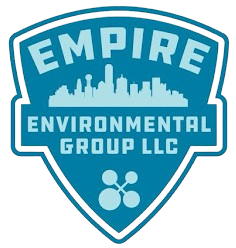If your property was built before the 1980s, there’s a good chance it may still contain asbestos in insulation, roofing, flooring, or siding. While asbestos might seem harmless when undisturbed, once fibers are released into the air, they pose serious health risks, including lung disease and cancer. Whether you’re a homeowner concerned about residential asbestos cleanup or a business owner planning commercial asbestos removal, knowing how to handle the process safely is critical.
Working with certified asbestos contractors and using trusted asbestos abatement services will ensure your property is safe and your family or employees remain protected.
In this guide, we’ll share practical tips for safe asbestos disposal, the importance of asbestos inspection and testing, and how to choose the right asbestos removal professionals. Whether you’re planning a small renovation or managing a large-scale demolition, these tips will help you navigate asbestos hazards with confidence.
Understand Where Asbestos Hides in Your Property
Before you can remove asbestos, you need to know where it might be hiding. In older homes, asbestos was commonly used in insulation, ceiling tiles, floor tiles, roofing, siding, and even textured wall coatings.
In commercial properties, it’s often found in boiler rooms, HVAC duct insulation, and large-scale flooring materials.
To detect asbestos, schedule asbestos inspection and testing with certified contractors. These professionals use specialized equipment to safely collect samples and confirm whether asbestos is present.
Never attempt to scrape or remove suspected materials yourself, as this can release dangerous fibers into the air.
Never Attempt DIY Asbestos Removal
While it may be tempting to save money by handling the removal yourself, asbestos removal is not a DIY job. The process requires specialized equipment, protective gear, and strict disposal procedures to meet safety and environmental standards.
Disturbing asbestos without proper precautions can make the situation far more dangerous, contaminating your entire property.
Instead, hire certified asbestos contractors who are trained to handle every step safely. They use containment barriers, HEPA filtration systems, and approved disposal methods to ensure compliance with all local regulations.
Prioritize Safe Asbestos Disposal
Proper disposal is just as important as removal. Throwing asbestos debris in the regular trash is illegal and dangerous. Certified asbestos abatement services transport and dispose of asbestos-containing materials at designated facilities, preventing airborne contamination and avoiding legal consequences.
If you’re also handling a renovation or demolition, consider pairing asbestos removal with professional demolition services to streamline the process.
Residential Asbestos Cleaning – Keeping Families Safe
Older homes can hide asbestos in places you wouldn’t expect, like attic insulation, floor tiles, or behind old paneling. For families, the priority is creating a safe living environment without unnecessary exposure during renovations or repairs.
Certified asbestos contractors can perform thorough residential asbestos cleaning, using specialized tools to safely remove contaminated materials while ensuring your home remains habitable.
Many companies also pair these services with mold remediation and water damage restoration, as these issues often occur alongside asbestos hazards.
Commercial Asbestos Removal for Businesses
For business owners, asbestos hazards can lead to serious liability issues if left unaddressed. Commercial properties often require large-scale abatement, especially before renovations or expansions.
These projects must follow strict federal and state regulations to protect workers, tenants, and the public.
Hiring experienced professionals for commercial asbestos removal ensures minimal disruption to your operations. Many companies also offer water mitigation and environmental services to make sure your property meets safety standards after remediation.
What to Expect from the Asbestos Removal Process
A typical asbestos removal process includes several key steps:
- Inspection and Testing – Confirm the presence of asbestos through professional sampling.
- Containment – Seal off affected areas to prevent fibers from spreading.
- Removal – Use specialized tools and methods to safely extract asbestos.
- Disposal – Transport materials to approved disposal sites following all regulations.
- Final Clearance Testing – Ensure the air is safe before reoccupying the area.
Using a trusted provider like Empire Environmental Group guarantees every step is handled correctly, protecting your health and property.
Choosing the Right Asbestos Abatement Services
Not all contractors are the same. Look for asbestos abatement services that:
- We are fully certified and insured.
- Provide clear documentation and testing results.
- Offer transparent pricing with no hidden fees.
- Use certified disposal facilities.
- Have experience with both residential and commercial projects.
Reputable companies will guide you through the process, ensuring every regulation is met and your property is restored safely.
Final Thoughts
Asbestos removal is not something you can cut corners on. By hiring certified asbestos contractors and relying on trusted asbestos abatement services, you protect your health, avoid legal troubles, and ensure your property is safe for the future.
Whether it’s residential asbestos cleaning or commercial asbestos removal, investing in professional services will save you time, money, and stress.
For expert help, contact Empire Environmental Group to schedule your inspection and start the removal process today.
FAQs
Q: How do I know if my property has asbestos?
A: Schedule a professional asbestos inspection and testing to confirm. Never rely on visual checks alone.
Q: Can I remove asbestos myself?
A: No. DIY asbestos removal is dangerous and illegal in many states without proper certification. Always hire professionals.
Q: How long does the asbestos removal process take?
A: It depends on the size of the project. Small residential jobs may take a day, while large commercial sites can take several days or weeks.
Q: What happens to the asbestos after removal?
A: Certified contractors handle safe asbestos disposal at regulated facilities, following strict laws to prevent contamination.
Q: Will asbestos removal disrupt my daily life?
A: Professionals use containment systems to minimize disruption. For larger projects, temporary relocation may be necessary.

